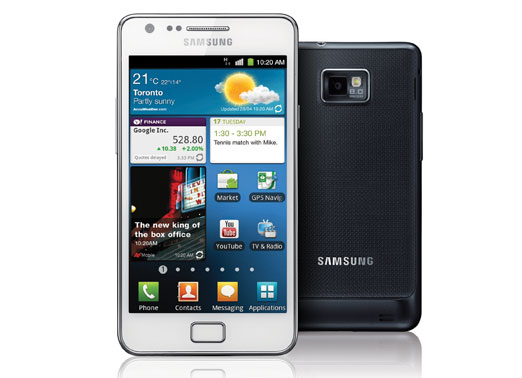The best and worst smartphones in the cold
Some smartphone vendors don’t allow their products to be used in cold weather while others guarantee smooth functioning even in frigid minus 20 degrees Celsius (-3 Fahrenheit).
Since we live in Canada. And, its cold here CDN will list some of the best and worst smartphones for the deep freeze to honour winter.
CDN’s colleagues in Finland tested some of the top brands at a lab called the “Weather Room” in Finland’s Technical Research Centre.
Click on the next photo to see the cold, hard facts about smartphone performance in sub-zero temperatures.
By Paolo Del Nibletto

iPhone truly built for silicon valley weather
According to Apple, its iPhones can be used only in temperatures between 0 and 35 degrees Celsius (32 to 95F). In other words, an iPhone user taking his device outside in typical Scandinavian winter conditions will do so at his or her own risk.
If the phone breaks down, Apple claims they will not be responsible and it is not covered by the phone’s warranty. No surprise there.
The iPhone 4S at 0 degrees Celsius/32F, it was business as usual. At -5C/23F, the iPhone 4S started showing symptoms such as a sim card error.
Lowering the temperature even further to -10 degrees Celsius/14F was more than the iPhone could handle. The Apple device suddenly announced a dead battery and shut down.

No no to the Nokia N9 in the cold
Equally as bad as the iPhone 4S in the cold is the Nokia N9 smartphone. The Weather Room test showed the Nokia model with a battery that was nearly empty.
The fact that Nokia is based in Finland and wintertime temperatures can reach minus 40 Celsius you would think the Nokia would be the best in bad weather.
None of the tested touchscreen smartphones could stand such extreme conditions. But, perhaps surprisingly, some feature phones did work, even though their LCD displays showed serious slowness.
But when the temperature dropped to -40C/-40F, none survived. Even the toughest ones shut down.

BlackBerry Bold in the cold
The Weather Room did not test any Research in Motion BlackBerry devices for some reason. So CDN did our own test. Using a Blackberry Bold smartphone on a particulary brutal winter day in Canada’s capital of Ottawa the device worked in minus 33 Celsius temperatures.
Click here to read more about the new Blackberry London design.

Is it cold in the Galaxy?
Against all odds, Samsung smartphones outlasted all other touch-screen devices. Only one of the smartphones tested kept running smoothly when the temperature reached -30C/-22F, and it was a Samsung.
I’m not sure if South Korean’s face the kind of cold temperatures as Finland or Canada, but they’ve managed to design a better phone for such conditions. The Galaxy S II doesn’t shut down until it is -35 degrees Celsius outside.
And until that point, there’s not even a sign of slowness in its display.
Click here to read more about the Galaxy S II.

Smartphone screens in the cold
All phones with LCD displays experienced difficulties when the temperature dropped below this. Amoled displays proved to stand cold much better and kept on going.
In AMOLED displays the colors are produced with a layer covered in organic material, organic light emitting diodes. This lack of liquid crystals explains why AMOLED displays work better in the cold.

Battery Breakdown
In cold temperatures the internal resistance of the battery grows, causing the output voltage to drop. When the voltage drops too low, below a threshold voltage, the smartphone thinks the battery is empty — even it is fully recharged — and shuts down.

Can your smartphone stand the cold
The majority of smart phones couldn’t handle temperatures colder than -15 or -20 degrees Celsius/5F to -4F. Even if they managed to stay on, most died when put to actual use.
Feature phones did better. Apart from slowness in the display, they showed no symptoms until the temperature dropped to -25C/-13F. By this time most smartphones were completely useless.
To read how other smartphones handled the cold click here.

❮ ❯